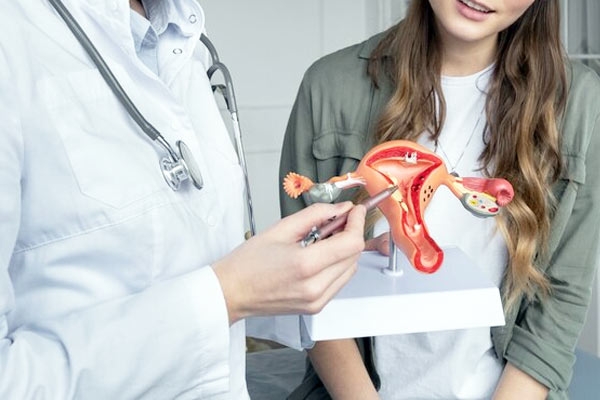
(Image source from: Freepik.com)
It’s important to listen to your body when something doesn’t feel right. Ovarian cancer is known as a silent killer because early symptoms can be vague and easily mistaken for other issues. However, this sneaky disease does actually provide early warnings if you pay attention. The cancer begins in the ovaries, which are integral to the female reproductive system. Their role is to produce eggs and the hormones estrogen and progesterone. Ovarian cancer can take different forms but epithelial ovarian cancers, which develop from cells covering the ovary’s outer surface, account for most cases. Unfortunately, by the time ovarian cancer is typically detected, it has already spread past the ovaries. However, if you’re aware of what to look for, you can catch it early.
Keep an eye out for the following common signs of ovarian cancer:
Abdominal bloating: Feeling bloated or full in your abdomen, especially after eating smaller meals, can be an early warning sign. This may be due to fluid buildup from tumours.
Tumours can put pressure on your digestive system, causing loss of appetite and premature feelings of fullness. Additionally, losing interest in your favorite foods is a cause for concern. Ovarian cancer can cause persistent indigestion, gas, and nausea that won't dissipate. Abnormal vaginal discharge or bleeding, especially outside of your normal menstrual cycle or after menopause, is also a red flag. Pelvic or abdominal pain, as well as lower back pain or tenderness, can indicate ovarian cancer. While the pain may be sporadic initially, it will eventually become more frequent and intense. Lastly, urinating more frequently than normal is also a symptom to be aware of.
If you have a family history of ovarian cancer, you may be at a higher risk of developing it yourself. It’s important to speak to your doctor about getting genetic testing done to check for mutations in genes like BRCA1 and BRCA2, which can increase your risk. It’s worth noting, however, that only a small number of ovarian cancers are linked to these mutations. Age is another key factor to consider, as ovarian cancer is most common after menopause, usually affecting those in their 50s and 60s. Keep an eye out for symptoms and speak to your doctor if anything seems amiss. Other risk factors include obesity and never having been pregnant.
If you receive an ovarian cancer diagnosis, the treatment options available to you will depend on the stage of your cancer and other factors. Thankfully, when detected early, ovarian cancer is highly treatable. The most common treatment is surgery, which involves removing the ovaries, fallopian tubes, and uterus in a procedure known as a total hysterectomy. The surgeon will also remove any cancerous tumours and as much of the cancer as possible. Chemotherapy may also be recommended after surgery to destroy any remaining cancer cells using anti-cancer drugs.
Before surgery to remove large tumours, chemotherapy can be administered to shrink them. Radiation therapy, which uses high-energy beams to destroy cancer cells, is not typically suggested for ovarian cancer but may be beneficial in certain cases. Hormone therapy, which inhibits the production or function of estrogen and other reproductive hormones that can fuel certain cancer types, is usually used for recurrent ovarian cancer. Ovarian cancer treatment options are constantly improving due to ongoing research, including the creation of new targeted therapies, immunotherapy medications, and better treatment techniques.









